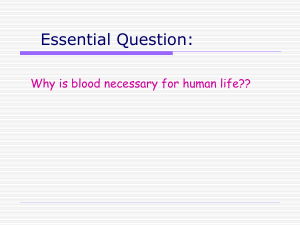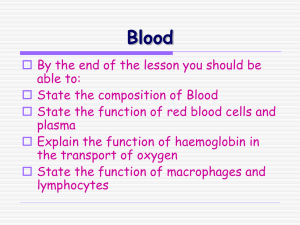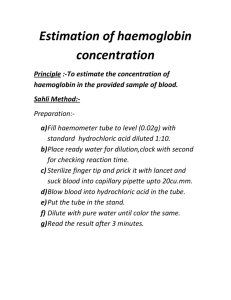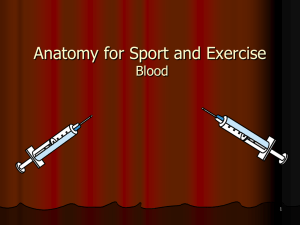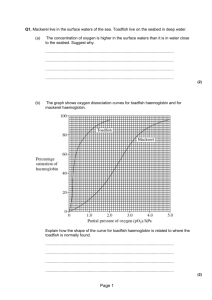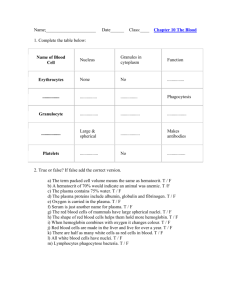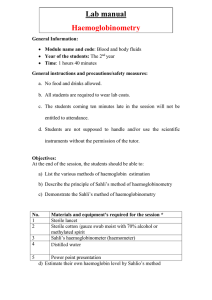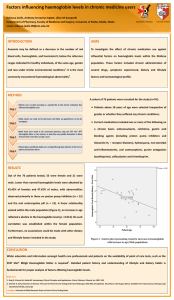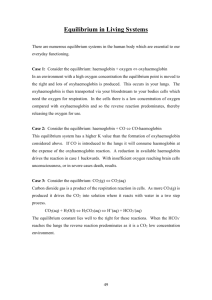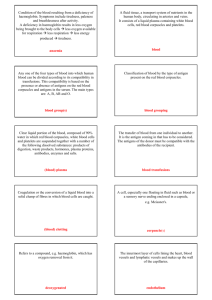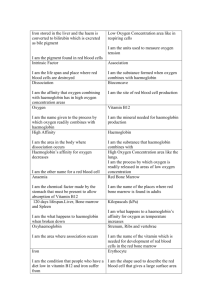Oxygen and Carbon Dioxide Transport
advertisement
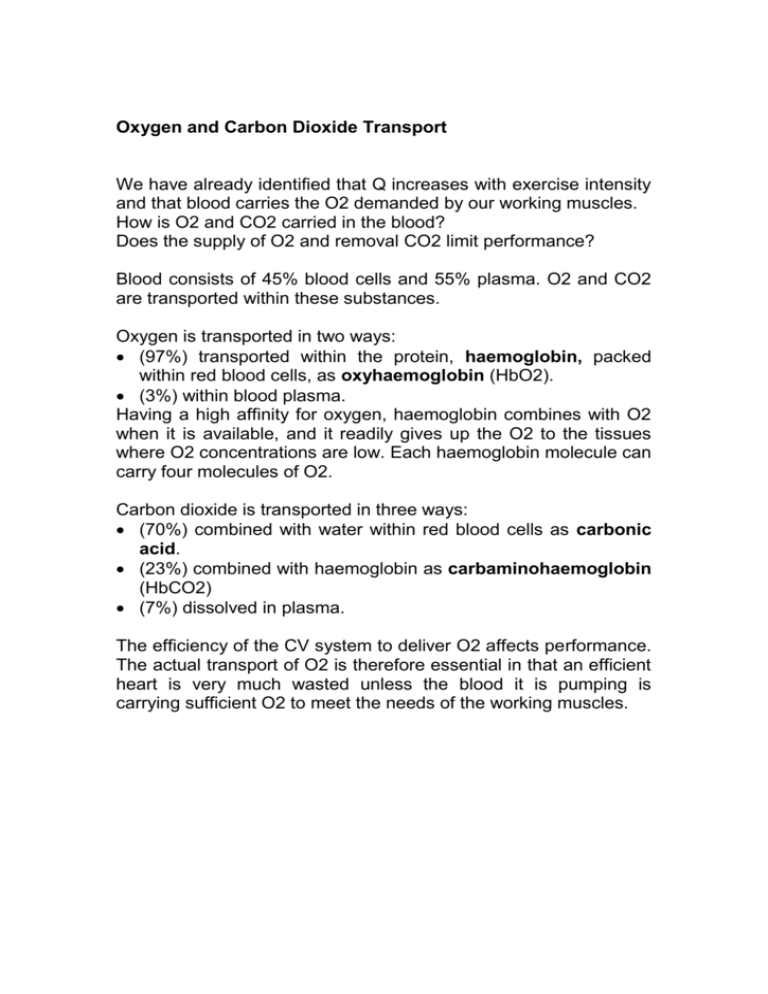
Oxygen and Carbon Dioxide Transport We have already identified that Q increases with exercise intensity and that blood carries the O2 demanded by our working muscles. How is O2 and CO2 carried in the blood? Does the supply of O2 and removal CO2 limit performance? Blood consists of 45% blood cells and 55% plasma. O2 and CO2 are transported within these substances. Oxygen is transported in two ways: (97%) transported within the protein, haemoglobin, packed within red blood cells, as oxyhaemoglobin (HbO2). (3%) within blood plasma. Having a high affinity for oxygen, haemoglobin combines with O2 when it is available, and it readily gives up the O2 to the tissues where O2 concentrations are low. Each haemoglobin molecule can carry four molecules of O2. Carbon dioxide is transported in three ways: (70%) combined with water within red blood cells as carbonic acid. (23%) combined with haemoglobin as carbaminohaemoglobin (HbCO2) (7%) dissolved in plasma. The efficiency of the CV system to deliver O2 affects performance. The actual transport of O2 is therefore essential in that an efficient heart is very much wasted unless the blood it is pumping is carrying sufficient O2 to meet the needs of the working muscles.
